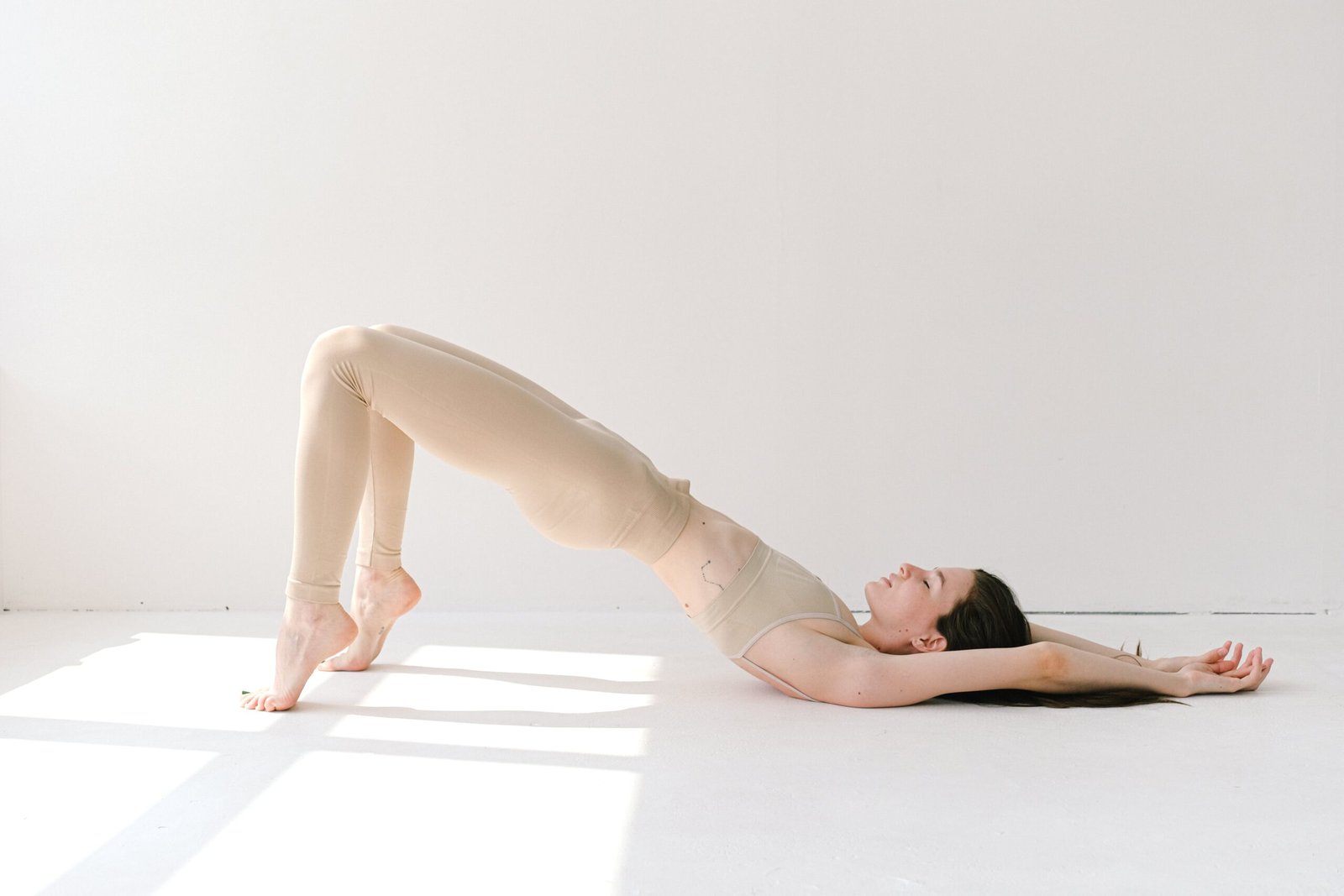
It’s no fun waking up with a sore shoulder, especially when you suspect that your sleeping habits might be to blame. Whether you’re a side sleeper or tend to toss and turn throughout the night, the discomfort can be disruptive and leave you feeling less than your best. Fortunately, there are simple and effective ways to relieve shoulder pain caused by sleeping on your shoulder. By making a few adjustments to your sleep position and incorporating some targeted stretches and exercises, you’ll be able to say goodbye to those morning aches and wake up feeling refreshed and pain-free. So, let’s discover how to find relief and get back to enjoying a restful night’s sleep.

Understanding Shoulder Pain from Sleeping on Your Shoulder
If you often wake up with shoulder pain, it is important to understand the causes and symptoms associated with sleeping on your shoulder. The human shoulder is a complex joint that involves a network of muscles, tendons, and ligaments. When you sleep on your shoulder, you may put excessive pressure on these structures, leading to discomfort and pain.
Causes of Shoulder Pain from Sleeping
There are various factors that can contribute to shoulder pain from sleeping. One common cause is poor sleeping posture. If you tend to sleep on your side with your arm positioned beneath your head or body, it can strain the muscles and tendons in your shoulder. Additionally, an unsupportive pillow or mattress can exacerbate the problem by not providing adequate cushioning or proper spinal alignment.
Common Symptoms of Shoulder Pain from Sleeping
The symptoms of shoulder pain from sleeping can vary from person to person. Some individuals may experience a dull ache, while others may feel sharp or shooting pain in the shoulder joint. You may also notice limited range of motion, stiffness, or difficulty lifting and moving your arm. In severe cases, shoulder pain from sleeping may even disrupt your sleep and affect your daily activities.
When to Seek Medical Help
While most cases of shoulder pain from sleeping can be managed at home, there are instances where medical intervention is necessary. If your shoulder pain persists for more than a week, worsens over time, or is accompanied by other concerning symptoms such as swelling, redness, or fever, it is important to seek medical help. A healthcare professional can provide a proper diagnosis and recommend appropriate treatment options.
Preventive Measures to Avoid Shoulder Pain from Sleeping
Fortunately, there are several preventive measures you can take to avoid shoulder pain from sleeping:
Invest in a Good Pillow
Choosing the right pillow can make a significant difference in preventing shoulder pain. Look for a pillow that provides adequate support and conforms to the shape of your head and neck. Memory foam pillows are often recommended as they offer optimal cushioning and pressure relief. Additionally, consider a pillow with a contour design that specifically supports the alignment of your neck and shoulders.
Adjust Your Sleeping Position
Changing your sleeping position can help relieve pressure on your shoulder. If you tend to sleep on your side, try shifting to your back instead. Sleeping on your back with a pillow supporting your neck and shoulders can help distribute the weight evenly and reduce strain. If you find it difficult to sleep on your back, try using a body pillow as a support prop to prevent rolling onto your side.
Use a Supportive Mattress
A supportive mattress is crucial in maintaining proper spinal alignment and reducing the risk of shoulder pain. Look for a medium-firm mattress that provides adequate support to your body, especially the shoulders and hips. Avoid mattresses that are too soft, as they can cause your body to sink and put additional pressure on the shoulder joint.
Maintain Proper Posture Throughout the Day
Good posture plays a significant role in preventing shoulder pain. Make a conscious effort to maintain proper posture while sitting, standing, and performing daily activities. Avoid slouching or hunching forward, as this can strain the muscles and ligaments of your shoulder. Taking regular breaks to stretch and move around can also help alleviate shoulder tension and promote better posture.

Exercises and Stretches to Relieve Shoulder Pain
Incorporating exercises and stretches into your routine can help relieve shoulder pain and improve flexibility. Consult with a healthcare professional or physical therapist before attempting any new exercises, especially if you have an underlying shoulder condition.
Shoulder Rolls
Shoulder rolls are a simple yet effective exercise for loosening up the shoulder muscles. Stand with your feet shoulder-width apart and roll your shoulders forward in a circular motion for 10-15 times. Then, reverse the direction and roll your shoulders backward. Repeat this exercise several times throughout the day to alleviate shoulder tension.
Pendulum Stretch
The pendulum stretch helps to stretch and strengthen the muscles around the shoulder joint. Stand next to a sturdy surface like a table or chair for support. Lean forward and place your unaffected arm on the surface. Allow your affected arm to hang freely, and gently swing it back and forth, side to side, and in a circular motion. Perform this stretch for about 5 minutes on each side.
Wall Climbs
Wall climbs are beneficial for improving shoulder stability and range of motion. Stand facing a wall and place your fingertips on the wall at shoulder height. Slowly walk your fingers up the wall, moving as high as you comfortably can. Then, walk your fingers back down. Repeat this exercise for 10 repetitions, gradually increasing the height each time.
Cross-Body Stretch
The cross-body stretch targets the muscles in the back of the shoulder, providing relief from pain and tightness. Stand or sit upright and extend your affected arm across your chest. Use your other arm to gently pull the affected arm closer to your body until you feel a stretch in the back of your shoulder. Hold this position for 30 seconds, then release. Repeat on the other side.
Doorway Stretch
The doorway stretch helps to stretch the chest and front shoulder muscles, promoting better posture and flexibility. Stand in a doorway and place your forearms against the door frame, with your elbows at a 90-degree angle. Gently lean forward until you feel a stretch in your chest and front shoulder. Hold this position for 30 seconds, then release.
Shoulder Blade Squeeze
The shoulder blade squeeze exercise targets the muscles between the shoulder blades, promoting better posture and relieving tension in the shoulders. Sit or stand upright and squeeze your shoulder blades together, as if trying to hold a pencil between them. Hold this position for 5-10 seconds, then release. Repeat for 10 repetitions.
Rotator Cuff Strengthening Exercises
The rotator cuff is a group of muscles and tendons that support the shoulder joint. Strengthening these muscles can help prevent future shoulder pain and injuries. Some common exercises for the rotator cuff include external rotations with a resistance band, internal rotations with a dumbbell, and shoulder abduction with a resistance band. Perform these exercises under the guidance of a healthcare professional or physical therapist.
Heat and Cold Therapy for Shoulder Pain Relief
Heat and cold therapy can be effective in reducing inflammation and alleviating shoulder pain. However, it is important to use them correctly and avoid excessive exposure to extreme temperatures. Always consult with a healthcare professional to determine which therapy is appropriate for your condition.
Applying Heat
Applying heat to your shoulder can help relax the muscles, increase blood flow, and promote healing. Use a heating pad, hot water bottle, or warm towel and apply it to the affected area for 15-20 minutes at a time. Make sure to wrap the heat source in a cloth to prevent direct contact with the skin and avoid using heat therapy if there is an active inflammatory condition.
Applying Cold
Cold therapy can help numb the pain and reduce swelling in the shoulder. Use an ice pack, wrapped in a thin cloth or towel, and apply it to the affected area for 10-15 minutes. Take breaks between applications to prevent frostbite or skin damage. Cold therapy is particularly beneficial during the first 48 hours after an injury or when there is acute inflammation.
Alternating Heat and Cold Therapy
In some cases, alternating between heat and cold therapy can provide additional pain relief and accelerate the healing process. This technique is known as contrast therapy. Start by applying heat for 10 minutes, followed by cold therapy for 5 minutes. Repeat this sequence two to three times, always ending with cold therapy. Avoid contrast therapy if you have circulatory issues or a compromised immune system.

Over-the-Counter Medications for Shoulder Pain
Over-the-counter (OTC) medications can provide temporary relief from shoulder pain. However, it is important to use them as directed and be aware of any potential side effects. Consult with a healthcare professional or pharmacist to determine which medication is suitable for you.
Nonsteroidal Anti-Inflammatory Drugs (NSAIDs)
NSAIDs, such as ibuprofen and naproxen sodium, can help reduce pain and inflammation in the shoulder. Take them as directed on the packaging or as advised by a healthcare professional. It is important to note that NSAIDs may have potential side effects, especially when used for an extended period. Avoid NSAIDs if you have a history of stomach ulcers, kidney problems, or are taking blood-thinning medications.
Topical Analgesics
Topical analgesics, such as creams, gels, or patches, can be applied directly to the skin over the painful shoulder area. These products usually contain ingredients like menthol, camphor, or capsaicin, which provide a cooling or warming sensation to alleviate pain and discomfort. Follow the instructions on the packaging and avoid applying topical analgesics to broken or irritated skin.
Pain Relieving Creams and Gels
There are various pain relieving creams and gels available that specifically target musculoskeletal pain. These products often contain ingredients like lidocaine or salicylates, which provide temporary relief by numbing the area or reducing inflammation. Apply the cream or gel to the affected shoulder area as directed, and be aware of any potential allergic reactions or skin irritations.
Using Proper Sleeping Positions to Relieve Shoulder Pain
Adjusting your sleeping position can greatly help alleviate shoulder pain and promote a more restful sleep. Experiment with different sleeping positions to find the one that provides the most comfort and support for your shoulder.
Back Sleeping
Sleeping on your back is generally considered the best position for relieving shoulder pain. Place a pillow under your head to support your neck and use a small pillow or rolled-up towel to cushion your lower back. Keep your arms at your sides or lightly rest them on your stomach to avoid putting excessive pressure on your shoulder.
Side Sleeping
If you prefer side sleeping, make sure to use a pillow that adequately supports your head, neck, and shoulder. Place the pillow between your knees to help align your spine and reduce strain on your shoulder. Keep your legs slightly bent, and avoid hunching your shoulder forward. You may also consider using a body pillow to provide additional support and prevent rolling onto your stomach.
Using a Pillow Between the Knees
Placing a pillow between your knees while sleeping on your side helps to maintain proper spinal alignment and reduces stress on your hip and shoulder joints. This position can alleviate pressure on the shoulder and promote better sleep quality. Make sure the pillow is thick enough to provide adequate support without being too bulky or uncomfortable.
Elevating the Upper Body with Pillows
For some individuals, elevating the upper body with pillows can help alleviate shoulder pain caused by conditions such as shoulder impingement or rotator cuff injuries. Prop yourself up with multiple pillows or use a wedge pillow designed to support the upper body. This position reduces the strain on the shoulder and promotes optimal blood circulation.
Pillow Options to Alleviate Shoulder Pain
Choosing the right pillow can make a significant difference in relieving shoulder pain. Consider the following options to find the one that works best for you:
Memory Foam Pillow
Memory foam pillows conform to the shape of your head and neck, providing optimal support and pressure relief. They help distribute the weight evenly and alleviate strain on the shoulder. Look for a pillow with medium-firm density to ensure proper alignment and comfort.
Feather Pillow
Feather pillows are soft and moldable, allowing you to adjust the loft and shape to support your shoulder. However, they may flatten over time and require fluffing to maintain their supportive properties. Consider getting a higher-quality feather pillow or combine it with an additional pillow for optimal shoulder support.
Contour Pillow
Contour pillows are specifically designed to support the natural curvature of your head, neck, and shoulders. They often have a depression in the center to cradle your head and provide support to the shoulder area. Contour pillows come in different materials, such as memory foam or latex, allowing you to choose the level of firmness that suits your needs.
Orthopedic Pillow
Orthopedic pillows are specially designed to alleviate pain and promote proper spinal alignment. They often have a unique shape or features like neck rolls or shoulder cutouts to provide targeted support. Orthopedic pillows can be beneficial for individuals with specific shoulder conditions or chronic shoulder pain.
Massage Therapy for Shoulder Pain Relief
Massage therapy can be a complementary treatment option for relieving shoulder pain and promoting relaxation. However, it is important to consult with a licensed massage therapist and inform them about your specific shoulder condition before undergoing any massage techniques.
Trigger Point Massage
Trigger point massage focuses on releasing tense or tight muscles by applying sustained pressure to specific trigger points. This technique can be effective in relieving shoulder pain caused by muscle knots or trigger points. However, it may cause temporary discomfort during the session.
Deep Tissue Massage
Deep tissue massage aims to alleviate chronic muscle tension and tightness by targeting the deep layers of muscle and connective tissue. This technique can help improve blood flow, reduce inflammation, and relieve shoulder pain. Deep tissue massage may cause some temporary discomfort, but the therapist can adjust the pressure according to your comfort level.
Sports Massage
Sports massage is commonly used to prevent and treat sports-related injuries, including shoulder pain. It combines various massage techniques to improve flexibility, enhance muscle recovery, and reduce pain and inflammation. Sports massage can be beneficial for individuals engaging in intense physical activities or experiencing shoulder pain due to overuse.
Swedish Massage
Swedish massage is a gentle and relaxing massage technique that involves long, flowing strokes to promote overall relaxation and stress reduction. While it may not directly target shoulder pain, it can help improve circulation, relieve muscle tension, and create a sense of well-being. Swedish massage is suitable for individuals seeking relaxation and general pain relief.
When to Consider Physical Therapy for Shoulder Pain
Physical therapy can be an effective treatment option for managing shoulder pain, especially if the pain is persistent or related to an underlying shoulder condition. Consider consulting with a healthcare professional to determine if physical therapy is suitable for your specific situation.
Benefits of Physical Therapy
Physical therapy offers numerous benefits for individuals with shoulder pain. It focuses on improving strength, flexibility, and range of motion in the shoulder joint. Physical therapists use targeted exercises, manual techniques, and other modalities to alleviate pain, restore function, and prevent future injuries.
Exercises and Techniques Used in Physical Therapy
Physical therapy sessions may involve various exercises and techniques tailored to your specific needs. These may include stretching, strengthening, and stabilization exercises targeting the muscles around the shoulder joint. Manual therapies such as joint mobilization and soft tissue manipulation can also be utilized to reduce pain and improve mobility.
Finding a Physical Therapist
To begin physical therapy for your shoulder pain, consult with your healthcare provider for a referral or find a licensed physical therapist in your area. It is important to choose a physical therapist who specializes in musculoskeletal conditions and has experience with shoulder injuries. Working with a qualified professional ensures that you receive the appropriate treatment and guidance for your shoulder pain.
Next Steps if Shoulder Pain Persists
If your shoulder pain persists despite trying various preventive measures and self-care techniques, it is important to seek further medical attention. A healthcare professional can help determine the underlying cause of your shoulder pain and recommend appropriate next steps.
Consulting with a Healthcare Professional
Schedule an appointment with your primary care physician or a specialist, such as an orthopedic doctor or a physical therapist, to further evaluate your shoulder pain. They will conduct a thorough examination, review your symptoms, and possibly order diagnostic tests, such as X-rays or MRI scans, to identify any underlying structural issues or conditions.
Medical Treatments and Procedures
Depending on the cause of your shoulder pain, a healthcare professional may recommend medical treatments or procedures to alleviate your symptoms. These can include corticosteroid injections to reduce inflammation, hyaluronic acid injections to lubricate the joint, or platelet-rich plasma therapy to promote healing. In more severe cases, surgical options might be considered.
Surgical Options
Surgery is typically the last resort when conservative treatments have failed to relieve shoulder pain. Surgical options for shoulder pain can range from minimally invasive procedures, such as arthroscopy, to more extensive surgeries, such as shoulder replacement or rotator cuff repair. The specific procedure will depend on the underlying condition and severity of your shoulder pain.
In conclusion, understanding shoulder pain from sleeping on your shoulder is important in order to find relief and prevent further discomfort. By taking preventive measures, such as investing in a good pillow, adjusting your sleeping position, and maintaining proper posture, you can avoid shoulder pain from sleeping. Incorporating exercises, stretches, and massage therapy can also help alleviate shoulder pain and improve flexibility. Additionally, heat and cold therapy, over-the-counter medications, and using proper sleeping positions and pillows can provide temporary relief from shoulder pain. If shoulder pain persists, it may be necessary to consider physical therapy or consult with a healthcare professional for further evaluation and potential medical treatments or surgical options. Remember to prioritize your shoulder health and seek appropriate medical guidance to ensure long-term relief and improved quality of life.





